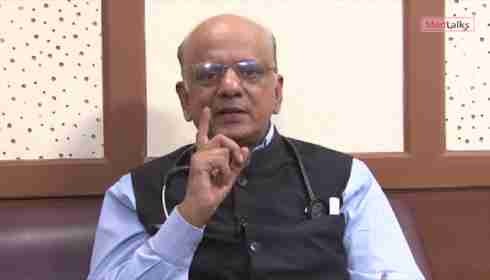
Pancreatic Cancer has poor prognosis, despite complete resection
DTMT Network
Pancreatic cancer, due to which Goa Chief Minister Manohar Parrikar died of on March 18, 2019, is being discussed in the medical fraternity. Former Union Minister Anant Kumar also died of pancreatic cancer in 2018.
Dr KK Aggarwal, President, Heart Care Foundation of India, said that Parrikar died of cancer of the exocrine pancreas, a highly lethal malignancy. He pointed out that surgical resection is the only potential cure, but because of the late presentation, only 15-20% of patients are candidates for pancreatectomy. The disease has a poor prognosis, even after a complete resection.
“Five-year survival after margin-negative (R0) pancreaticoduodenectomy is around 30% for node-negative and 10% for node-positive disease. Pancreatic cancer usually refers to a ductal adenocarcinoma of the pancreas (85% of all pancreatic neoplasms),” adds Dr Aggarwal.
More than 95% of malignant neoplasms of the pancreas arise from the exocrine elements. The most common presenting symptoms in patients with exocrine pancreatic cancer are pain, jaundice and weight loss.
The initial presentation of pancreatic cancer varies according to tumor location. Around 60-70% of exocrine pancreatic cancers are localized to the head of the pancreas, while 20-25% of pancreatic cancers are located in the body/tail.
Pain is one of the most frequently reported symptoms, even with small (<2 cm) pancreatic cancers. The pain associated with pancreatic cancer is usually insidious in onset, and has been present for 1 to 2 months at the time of presentation.
Pain has a typical gnawing visceral quality, and is generally epigastric, radiating to the sides and/or straight through to the back. Pain may be intermittent and made worse by eating or lying supine. Pain is frequently worse at night. Lying in a curled or fetal position may improve the pain.
Severe back pain should raise suspicion for a tumor arising in the body and tail of the pancreas. Rarely does pain develop very acutely as a result of an episode of acute pancreatitis due to tumoral occlusion of the main pancreatic duct.
Jaundice is a relatively early sign in tumors arising from the pancreatic head and pancreatic tumors that present with painless jaundice have been ascribed a relatively more favorable prognosis compared with those that present with pain and obstructive jaundice. Jaundice secondary to a tumor in the body or tail typically occurs later in the course of the disease, and may be secondary to liver metastases.
A recent onset of diabetes mellitus may be noted. Unexplained superficial thrombophlebitis, which may be migratory (classic Trousseau's syndrome) is sometimes present.
Metastatic commonly affects the liver, peritoneum, lungs and less frequently, the bone. A solid pancreatic lesion is uncommonly found as an incidental finding on CT scans.
Abdominal CT scan is the preferred initial imaging test in patients presenting with epigastric pain and weight loss, but without jaundice.
In practice, transabdominal ultrasound is commonly utilized as an initial screening technique for a biliary-pancreatic disease. However, transabdominal USG has high sensitivity for detecting tumors >3 cm only.
But if acute pancreatitis is in the differential diagnosis, transabdominal USG is not the preferred initial test. Contrast-enhanced CT scan is the best option. Most early-stage tumors will be less than 3 cm in size.